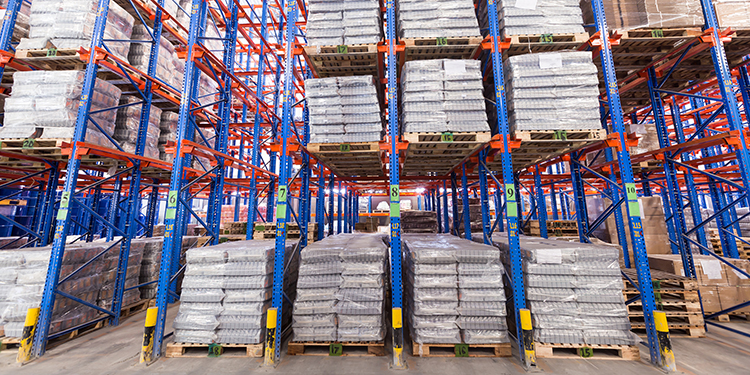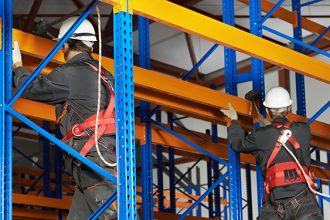Drive-In Racking and Pallets: Two Key Factors Ensure A Safe Storage System

Engineered and constructed with upright frames and side rails upon which pallet loads of the same product are stored, the safe use of drive-in rack depends on two key pallet factors: size and structural integrity. That’s because drive-in rack allows a forklift to enter from one side of the structure to pick up or deliver pallets that rest on continuous rails; the pallets must be sized to rest evenly on the surface of the two rails, spanning the distance between them. They must also be intact and sturdy enough to bear the weight of their loads without collapse.
Because drive-in rack is designed and engineered specifically to fit one pallet dimension – 40 inches is the most commonly used pallet width — the typical system spaces the vertical legs of the pallet guide angles 42 inches apart and uses 3-inch-wide pallet guide rails. This ensures that the pallet has an extra inch of leeway should it be placed farther to the left or the right so it will still have enough “bite” to rest securely in place. Anything smaller has an increased likelihood of falling should the pallet not be centered perfectly; anything larger will impact the uprights and potentially cause structural damage or rack failure. (While wider, 4-inch rails are available, their use can increase the overall cost of the structure.)
For this reason, it is not recommended that multiple pallet sizes be used within the same drive-in rack structure. Should an operation desire drive-in racking for different pallet dimensions, best practice is to install separate rack structures designed specifically to match each pallet’s profile. In fact, to ensure that the right size pallet is always used in a given drive-in rack, some operations re-palletize received items onto an in-house pallet prior to putaway.
As for pallet integrity, it is critical to ensure that the bottom boards are intact. Pallets with cracked or broken boards are at a higher risk of failure and collapse under the weight of the load as it rests on the drive-in rails. Upon receipt, pallets should be inspected prior to putaway in the drive-in rack. Loads on damaged pallets should be re-palletized before storage.
To avoid these potential issues, operations using drive-in rack should conduct regular forklift operator training specific to the proper loading and unloading of these structures, as well as about how to correctly identify the size and condition of the pallets to be placed within the storage system.
Want more best practice ideas for the safe operation and use of industrial storage rack systems? Download RMI’s ANSI MH16.1-2012 (R2019) Specification for the Design, Testing and Utilization of Industrial Steel Storage Racks.


